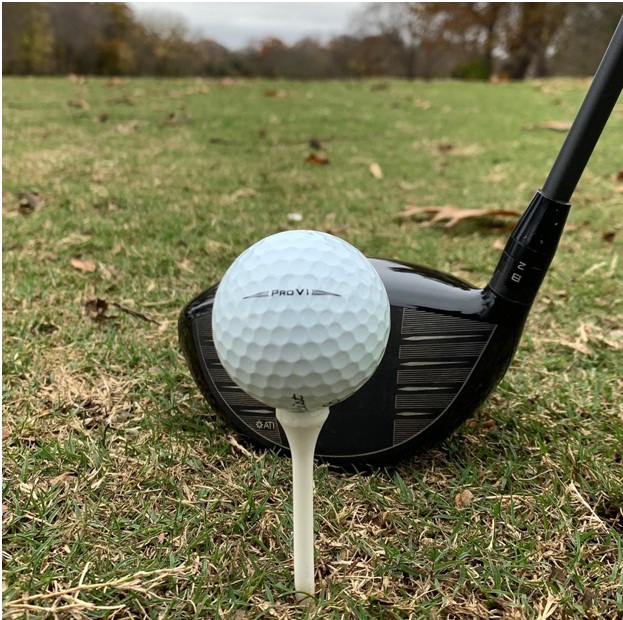Is Your Shaft Too Stiff? The Best Driver Shaft Won’t Be!
Posted by Dallas Golf on 31 Aug 2021

Shaft flex is one of the single most important aspects of a driver shaft. While there is no substitute for consistent practice, a shaft with either too much or too little flex can instill bad habits in you while you’re practicing and will hamper your efforts. By all means, the best driver shaft for your abilities should not be too stiff - it should naturally complement your abilities and encourage the progression of your talent.
It’s pretty easy to tell when a driver shaft is not stiff enough. It’ll feel almost “whippy,” and you’ll actually be able to feel the flex in the shaft. But what about when a shaft is too stiff? Why is it a problem, and when problems does it cause? Let’s get into it.
Stiffness: Not the Best for Learners
Stiffer shafts are not ideal for learners or for golfers with slower swing speeds. Stiff shafts are not forgiving and can frustrate recreational players and even experienced players with slower swing speeds. The stiffer the shaft, the more it requires you to do the work. A more flexible shaft will bend and load with energy, even at lower swing speeds - which is why for most amateurs, the best driver shafts are on the more flexible side. For less experienced golfers, more flexible shafts are easier to use, more accommodating, and can enable greater driving distances and accuracy than their stiffer counterparts.
So, how can you tell if a shaft is too stiff?
How to Tell if Your Shaft is Too Stiff
One of the symptoms of a driver shaft that is too stiff for a player has to do with range. Simply put, if your swing speed is below 100mph (give or take a little) then a stiff shaft is going to frustrate your abilities to add distance to your drives. The shaft will flex less during the swing, and the end result is you will not be able to drive the ball as far. If you’ve tried everything, but you just can’t seem to improve on your range, or something feels “off” about your driver shaft, it may be that the shaft is too stiff.
Accuracy may also suffer with a driver shaft that is not flexible enough for your needs. If your driver’s shaft is too stiff, the clubhead may not square with the ball at the point of impact, causing slices and fades. If you can’t feel the weight of the clubhead loading through the shaft, it’s probably too stiff, and can cause errors and issues associated with accuracy such as these.
Now, admittedly, issues associated with accuracy are just as likely to be caused by user error as they are by the shaft itself. Poor form, acquired bad habits, inconsistencies through your swing, kick point variation and torque ratings can also cause accuracy to suffer. However, if you’ve ruled these out, it may be the shaft flex.
You can also check the shaft for a “dead” feeling. Practice a few swings with your driver without attempting to drive any golf balls. You should be able to feel the shaft load through the weight of the clubhead. A shaft is said to be dead if you can’t feel this. A dead shaft is too stiff and must be rectified.
With these traits in mind, there’s also a distinct possibility that your efforts have been frustrated by some other aspect of the shaft.
Other Signs Your Driver Shaft Is Not Well Paired to Your Abilities
In addition to shaft flex, the best driver shafts will be paired to your abilities according to their other traits as well. Consider the following aspects of most golf shafts on the market.
-Torque: Torque refers to how much the shaft “twists” or more properly, torques around its central axis. High torque ratings are generally associated with flexible shafts, so it’s very unlikely that a shaft is going to be too stiff and have too much torque at the same time. However, high torque can cause accuracy to suffer because it can cause a clubface to be too open at the bottom of the swing where it contacts the ball, which can cause several shot errors.
-Kick point: Kick point, which refers to how high up on the shaft it appears to flex, can also adversely affect a golf swing. Shafts with low kick points feel like their flex down closer to the clubhead and can result in high, floating shot trajectories. Conversely, shafts with high kick points (that flex more around the midsection of the shaft) produce longer, flatter shot trajectories. Just be aware that if you are experiencing either of these situations the issue may be attributable to kick point and not necessarily directly to shaft flex.
-Length: Length is another really important feature of a driver shaft that will impact your performance. Driver shafts that are either too long or too short can cause a whole host of problems, including fat and thin shots. If you know your measurements, however, it should be easy to rectify issues associated with shaft length.

Swing Errors That Are Not Caused by the Golf Shaft
One final note is that not all swing errors are caused by your equipment. In fact, most of them are not. Far and away many errors and complications are caused by learned bad habits or inconsistency in your form. Working with a professional trainer who will observe and analyze your swing in real-time can help you correct many of these. Remember - it might be tempting to blame the equipment, but sometimes the issue is the golfer and not the club!
What You Can Do About It
The solution for a driver shaft that is too stiff is to have your club re-shafted with a more flexible shaft. The solution to bad form is to practice consistently or enlist the help of a professional trainer. We can help with both - either use our online golf shaft fitting tool, visit us in our retail outlet to take advantage of our club fitting services, or call our experts at 800-955-9550 to learn more.
